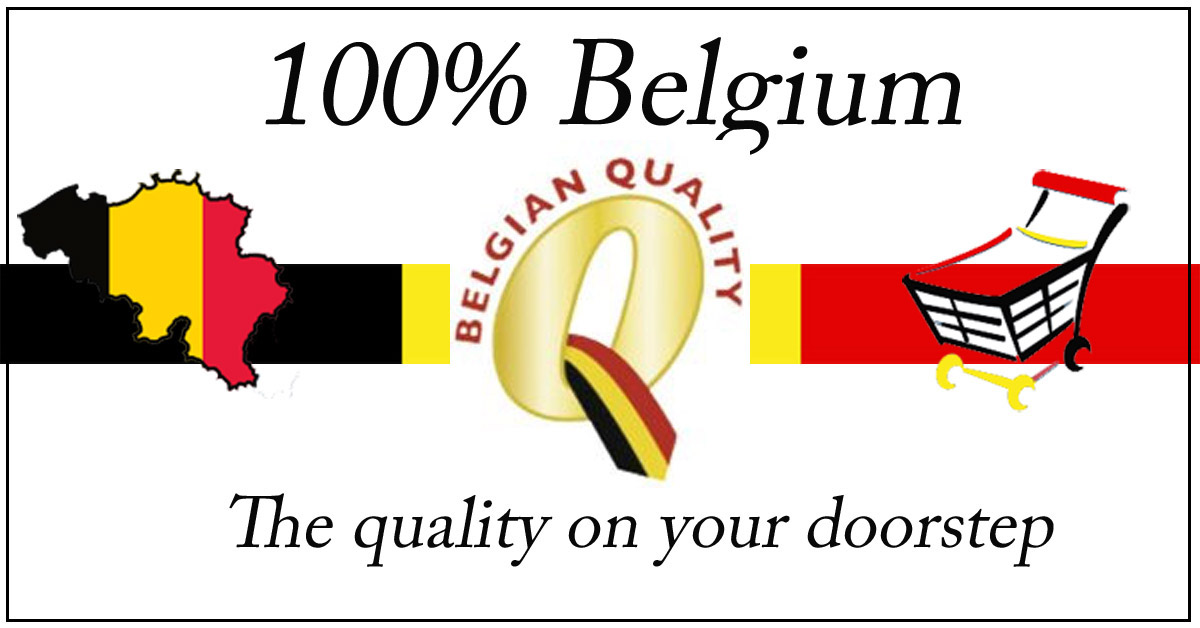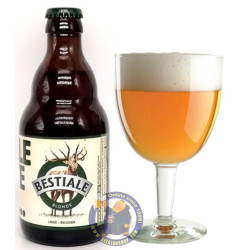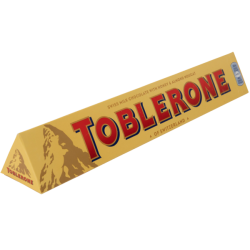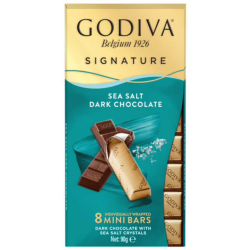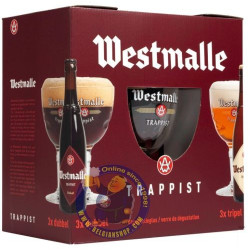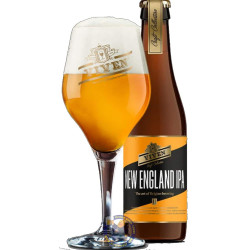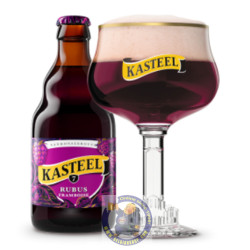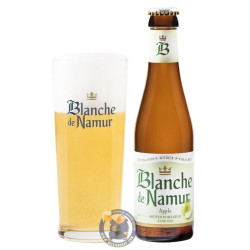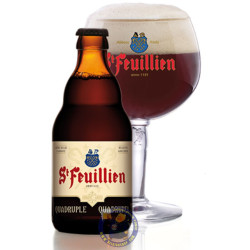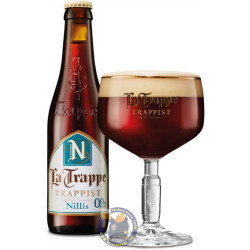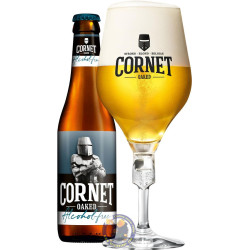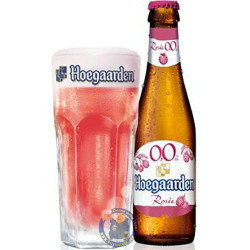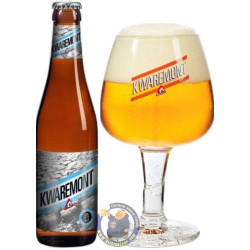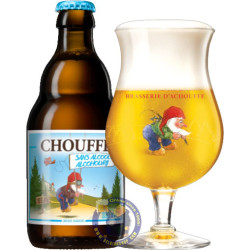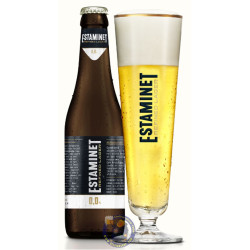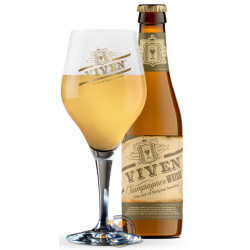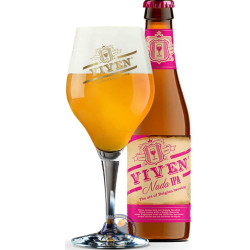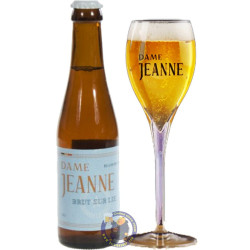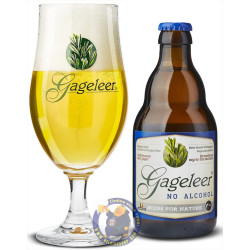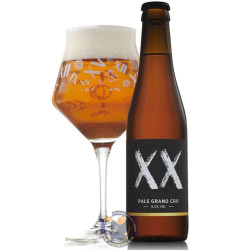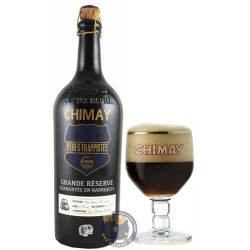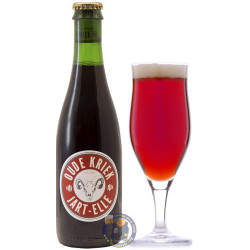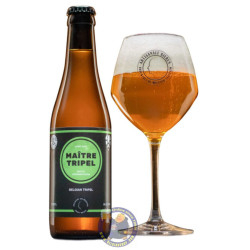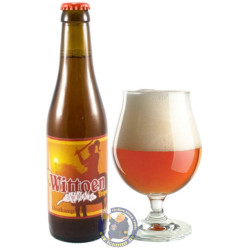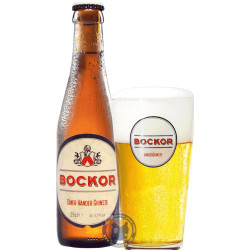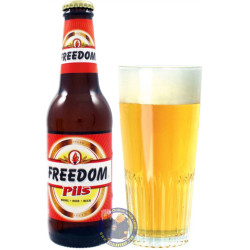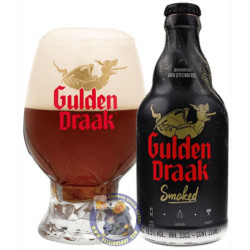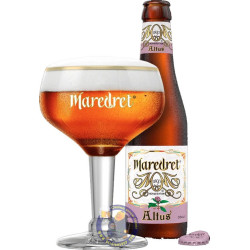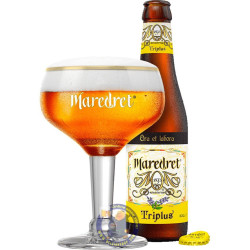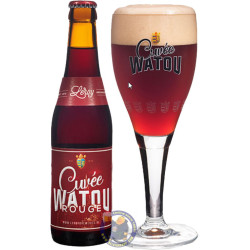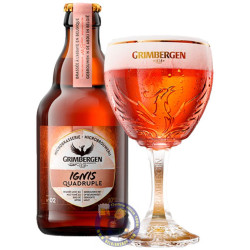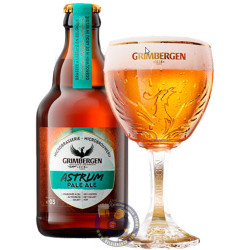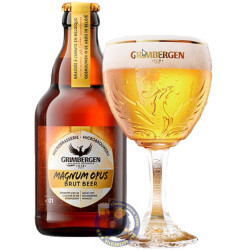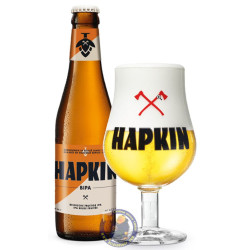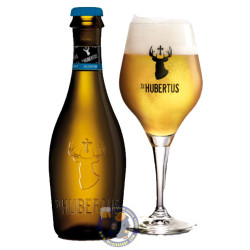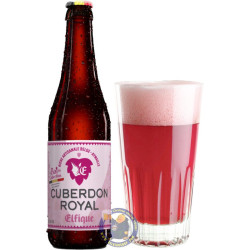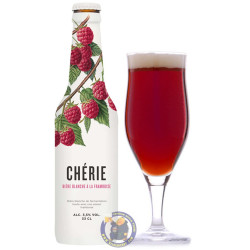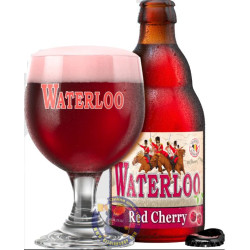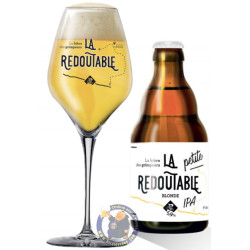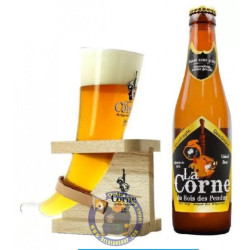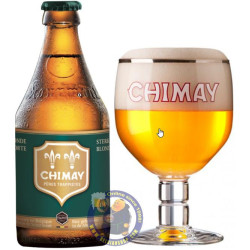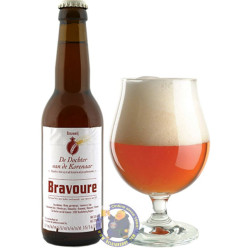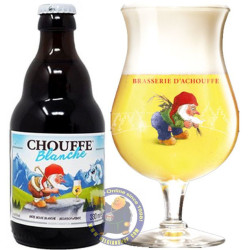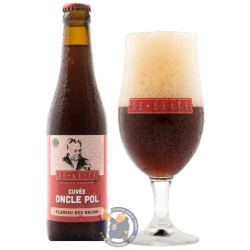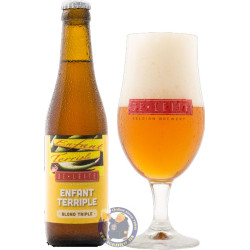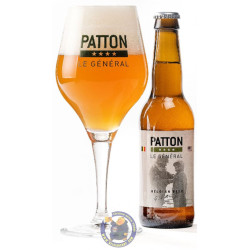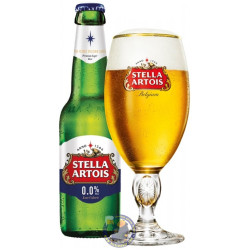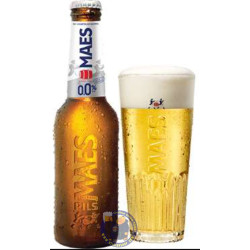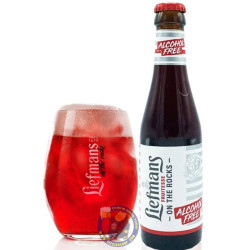Beers
Subcategories
Trappist beers
There are 12 Trappist breweries in the world. Only beers brewed in an abbey, under the supervision of a anastic community of the Cistercian tradition, have the right to this rigorously controlled label of origin. The 6 trappist beers in Belgium are Achel, Orval, Chimay, Rochefort, Westmalle and Westvleteren. Of the 6 Belgian trappist beers, 3 are brewed in Wallonia. We find the other Trappist breweries in Austria, France, Italy, USA and Holland (2). These are top fermentation beers with after-fermentation in the bottle.
Abbey beers
As the designation " bière d'Abbaye" ( abbey beer) has always been synonymous with quality and tradition, many breweries have used it. In fact these beers are not brewed by monks. Some even carry the names of abbey which have never existed. The term abbey may indicate that the beer is brewed in the way used by monks, that there is an abbey nearby or, simply, that there is a monk on the label. These beers have no specific characteristics. In the last few years, a new category of Abbey beers has appeared. These are beers produced by a private brewery, installed within the confines of a abbey deserted by the original occupants in the past ( Abbaye des Rocs, Val Dieu, Abbaye d'Aulne...)
Christmas Beers
Many breweries produce special beers during December. Some are stronger than the usual beers, others are spiced.
Flanders Red
A Flanders Red, are commonly referred to as the "red" beers of West Flanders. Belgian Red Beers are typically light-bodied brews with reddish-brown colors. They are infamous for their distinct sharp, fruity, sour and tart flavours which are created by special yeast strains. Very complex beers, they are produced under the age old tradition of long-term cask aging in oak, and the blending of young and old beers.
Geuze Lambic Fruits
At 400 years old, Lambics have been in production longer than any other commercially brewed beer. They are brewed in Brussels is much the same way as they have been since the 16th century. Lambics are unique among other beers in that they rely on spontaneous fermentation to brew. Yeasts aren't added into the kettle like other beers, the nfermented brew is instead run into an open copper tank that is stored in the attic of the brewery. The windows are left open to allow the brew to cool. This is where the wild, airborne yeasts interact with the beer. Later, it is stored for up to three years in wooden barrels, compounding the process and giving lambics their completely unique and unforgettable flavor and body. This unique brewing style also leads to a unique drinking experience. Lambic bears little resemblance to most beers you have probably tasted. Crisp, earthy, dry, tart, sometimes bordering on downright sour. Unblended lambics are a rarity. Usually, lambics are blended with fruity flavors to make them more accessible. Remember, though, not all fruit beers are lambics.
Gluten Free
Gluten-free beer is beer made from ingredients that do not contain gluten such as millet, rice, sorghum, buckwheat or corn (maize). Gluten-free beer is part of a gluten-free diet. People who have gluten intolerance (including celiac disease and dermatitis herpetiformis sufferers) have a reaction to certain proteins in the grains commonly used to make beer, barley and wheat. The hordein found in barley and the gliadin found in wheat are types of gluten that can trigger symptoms in sufferers of these diseases.
Low/No Alcohol
Non-alcoholic beer has become increasingly popular in recent years. Actually, 'low alcohol' is a better name, because the beer still contains alcohol, but an extremely low percentage. Non-alcoholic beers may contain up to 0.1% alcohol, which is fifty times less than the alcohol percentage of an average lager.
Pils
Pils is the all-around beer. It is the most produced and most consumed in the world and the largest international breweries are essentially based on this type of beer. Helping along its wide popularity, it is considered by a large number among us to be an excellent beer to accompany daily meals, as an alternative to wine or "table beer". But a lesser-know fact about Pils is that it is above all a "modern" beer since it is produced using techniques discovered just at the end of the XIXth century. Since then, through no real effort of its own, it has driven a series of other beers into oblivion. And althought it seems to be slowing slightly in recent times, due to specialty beers being drunk in higher quantities than ten or twenty years ago, it still leads the pack and is the preferred beer of Belgians in terms of litres consumed.
Special beers
There are many beers with different characters, whether due to their flavour, level of alcohol, region of production, colour, etc. One might think that the belong to no category. In reality, there are all placed in a category know as " Belgian Specials" , a bit of a catch-all, but distinguished by the fact that these beers are found only in Belgium.
Season beers
These beers are particularly brewed in the Hainaut province. Originally they were produced by brewer farmers during the winter months, then kept for consumption in the summer. The beer had to be robust enough to keep for several months but not too strong, as it was to serve as a thirst-quenching drink for the harvesting period. Season beers are generally orange-tinted. They are top fermented and bottled in champagne-style bottles. Their carbonisation and sharpness are very refreshing. There is an emphasis on fruitness in the flavour. They are sometimes spicy .
White beers
This is a category of beers based on wheat, which are very refreshing, generally flavoured ( coriander, orange peel, etc..). Specialities of the Louvain region, the white beers, which are so called because their pale colour, were originally made from barley ( about 45%), wheat ( 45 %) and oats ( 10%). After the First World War production was stopped, following restrictions on oats and wheat. Since then production has started up again in the region, but only with barley and wheat. Hoegaarden is the beer mainly concerned.
There are 817 products.
Kasteel Rubus Framboise 7% - 1/3L
La Bestiale Blond 6,2% - 1/3L
Blanche de Namur Appel 3,1% - 1/4L
Very soft, with a base of fresh apple juice. It will be beautiful and even more refreshing in a cocktail or a granita.
St Feuillien Quadrupel 11° - 1/3L
La Trappe Alcohol FREE 0,0° - 1/3L
Cornet Alcohol FREE 0,3° - 1/3L
Hoegaarden Rosée Alcohol FREE 0,0 - 1/4L
Kwaremont Alcohol FREE 0,3° - 1/3L
Whether you want to party responsibly or quench your thirst after intense exertion, Kwaremont 0.3 has you covered.
This attacking blonde has a full-bodied temperament with a spicy touch and a pronounced thirst-quenching finish.
Chouffe Alcohol FREE 0,4° - 1/3L
Estaminet Alcohol FREE 0,0° - 1/4L
Viven Champagner Weisse 4,8° - 1/3L
Festive nose, special structure. Deliciously creamy blond with floral hints. Refreshing when it hits the tongue followed by a soft af- tertaste. The uncrowned king of the aperitif!
Viven Nada IPA 0,3° - 1/3L
Soft character supported by aromahops. This fruity non-alcoholic alternative is to be enjoyed endlessly. Comparable to a floral New England IPA, balanced in the aftertaste. Fruity and fresh the evening itself, and the day after!
Viven New England IPA 4,1° - 1/3L
Dame Jeanne Brut Sur Lie 8.5° - 1/3L
The Brut sur Lie starts with hints of apple, pear and pink grapefruit followed by more exotic fruit flavors such as peach and apricot with a typical hop-like aftertaste. The Brut sur Lie is very suitable as an aperitif drink for an intimate dinner at home or as a festive opener during a reception. This fine brut beer will charm both the gentlemen and the
ladies and convince both beer and wine lovers... a real crowd pleaser.
Gageleer Free Alcohol 1/3L
XX Pale Grand Cru 6.0° - 1/3L
Chimay Grande Réserve Oak aged (2022) Whisky 75cl
"Grande Réserve" is an exceptional beer that is fermented in barrels. The beer enjoys a triple fermentation and a long maturation in barrels. Grande Réserve is neither filtered nor pasteurised and has an inimitable round and woody taste.
Oude Kriek Jart-Telle 6° - 37,5cl
De Meester Maitre Tripel 8,5° - 1/3L
Wittoen Tripel 7° - 1/3L
For the Wittoen we do it the other way around and we replace the hops again with a number of old-fashioned herbs . In the end we obtain a subtly flavoured, amber colored beer . Definitely taste it!
Bockor Pils 5,2° - 1/4L
After the yeast period of approximately ten days, where the typical flavour package of our lager is determined, the young beer is cooled down to 0°C and gets it through a maturization of 3 weeks.
By a double filtration, Bockor gets its golden color and its clearness.
Bockor has a nice foam head when the beer is poured professionally in a clean, degreased glass. The smell has a nice touch of hops and a subtle bitterness.
Freedom Pils 5,2° - 1/4L
Gulden Draak Smoked 10,5° - 1/3L
The use of smoked malt in combination with the specialty of Brewery Van Steenberge has a spectacular result: a heavy quality beer of high fermentation with a secondary fermentation in the bottle, baptized as Gulden Draak Smoked. The smoked malt in the recipe gives the beer a velvety soft roasted taste.
Maredret Altus 6,8° - 1/3L
Maredret Altus develops a warm spiced bouquet with notes of clove, hay and juniper berries. The hop aromas will remind you of freshly cut grass and the caramel flavours give this abbey beer a comforting edge.
Maredret Triplus 8° - 1/3L
Maredret Triplus has a pleasant spring fragrance with citrus notes and a slightly woody finish. Triplus is also characterised by strong aromas of spices, from sage to galangal and laurel.
Leroy Cuvée Watou Rouge 8,5° - 1/3L
Grimbergen Ignis Quadruple 10,0° - 1/3L
Generous notes of malt, oak, caramel and hazelnuts, supported by a dark warming fruitiness inspired by the monastery's conservatory.
The strong dark fruitiness goes well with venison and simmering food, while the beer's smoke notes make it ideal for cold-smoked meat and fish such as smoked salmon or halibut.
Grimbergen Astrum Pale Ale 6,0° - 1/3L
The mild and delicious malt taste is lifted in the encounter with the large fruity notes of Papaya, passion fruit and gooseberry. The sweetness and bitterness are elegantly balanced and offer a lively and refreshing taste and a clean and crisp aftertaste.
The beer's perfect balance makes it extremely suitable for BBQ. Its refreshing properties go well with fried fish, while the bitterness goes well with most cheeses, both firm and soft
Grimbergen Magnum Opus Brut 8,0° - 1/3L
A complex lively brew with a delicate, almost perfumed floral scent. Discreet malt character and light fruity notes of pear, orange and apple. Crispy, refreshing mouthfeel and a clean dry aftertaste.
The vinous dry balance makes Magnum Opus perfect for everything good from the sea, not least seafood and fish served with alloy sauce. The elegant liveliness makes it an obvious candidate for festive dishes such as canapés with air-dried ham etc.
Hapkin BIPA 6,7° - 1/3L
These aroma hops give Hapkin Bipa its typical, fresh fruity taste with notes of citrus, peach and mango. (alc. 6.7% vol.)
St Hubertus Blanche 5.0° -1/3L
Thanks to this beer’s cloudy paleness and sparkling acidity, you can be sure it will refresh your best times on the terrace.
Or any other outdoor activities, so long as they include people with taste.
Elfique Cuberdon Royal 5.5° - 1/3L
Chérie Framboos 3.5° - 1/3L
Waterloo Red Cherry 8° - 1/3L
La Petite Redoutable IPA 5° - 1/3L
La Corne du Bois des Pendus Quadrupel 12° - 1/3L
A novelty at the Ebly brewery, La Corne du Bois des Pendus Quadruple !!
This golden and powerful amber beer with an alcohol content of 12 degrees will delight your palate with its woody and bourbon vanilla notes.
A woody note, a touch of vanilla, this powerful beer will have something to seduce you and warm your heart during the winter period.
Chimay 150 10° - 1/3L
An authentic trappist beer
Chimay 150 is a strong, blond beer that is refreshing and fruity, tasty and intense. Its mint, bergamot, lime and eucalyptus aromas will take you on a surprising journey. Its delicate hints of rosemary and clove go perfectly with the subtle floral notes, enhanced by a touch of invigorating ginger. Its mellow, rounded body and smoky, spicy flavour are typical of Chimay beers, and will leave you with an exquisitely sophisticated aftertaste.
Chimay 150 was brewed for the first time in 2012, as a limited edition (150,000 bottles), for the brewery’s 150th anniversary.
De Dochter van de Korenaar Bravoure 6.5° - 1/3L
Bravoure takes its smoke flavor from a good dose of “Bamberg Rauchmalz” smoked with beech wood. The subtle smokey aspects combine very well with the slightly sweet caramel notes of the ‘Cara-Munich malt. This results in a balanced smoky beer with a subtle caramel flavor.
Ideal with smoked meats and barbecue.
Style: Smoke Beer
Chouffe Blanche 6.5° - 1/3L
De Leite Cuvée Oncle Pol 6.0° - 1/3L
The beer is soft-sour ‘Flemish red-brown’. A blend between a brown beer that could ripen for over a year in oak barrels and a young blond beer. The love for family and art is a most important pillar at Brewery De Leite. The father of brewer Luc was the 7th child in a family of 9. The friendship between the 8th in row, uncle Pol, and nephew Luc is deep. Cuvée Oncle Pol is dedicated to him. When introducing the beer, the brewer had conspired with the children of his uncle to give him a big surprise. They arrived with their father at the brewery ‘just to taste a beer’. At that moment, the brewer could proudly and happily present his dear uncle with the first bottle of this new beer.
De Leite Enfant Terriple 8.2° - 1/3L
Patton - Le Général 8.5° - 1/3L
The attack is fresh, long in the mouth with a balanced bitterness.
It smells so typically like the Belgian triples do. It still gives off fine aromas of primary fermentation that already tickle the taste buds.

